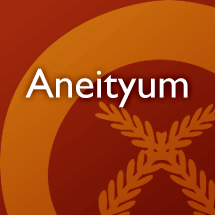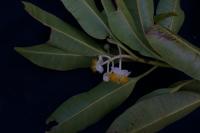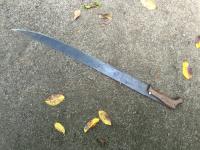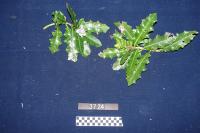An example search has returned 100 entries
algaunyi
v.n. to cross over or above, as over a fence, or tree in a path, or on stones through a river
bookmarkehcodaig
n. plant shoots; also "ehcohodaig"
bookmarkincat
n. flax
bookmarkincetcai
n. a bundle of wood for fire
bookmarkincetevak
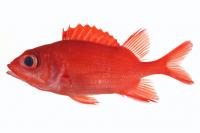
n. Bluelined squirrelfish, Tahitian squirrelfish
Example: Photo by Jeffrey T. Williams / Smithsonian Institution, License: CC BY-SA 3.0 via Fishes of Australia
bookmarkinewosneiak
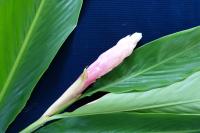
n. herb to 1 m, flower bracts yellow. (collection: Michael J. Balick #4921)
Example: Introduced species, used for decoration. Planted near houses and roads. Use the flower for decorating hair.
bookmarkingaije
n. kind of tree
bookmarkinhaij
n. the candle-nut tree; also "inhaig"
bookmarkinhenid
n. kind of sugarcane
bookmarkinhodaig et ecro
n. astronomy word, no def. given--possibly referring to a common shellfish "inhudaig". no def. for "ecro" or any feasible alternate spellings.
bookmarkinja
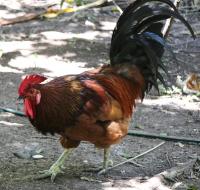
inma
n. Artocarpus altilis
Example: shoot: Mix heated over fire and taken out during sunset. Healer clenches the package in his fist, then gently punches the patients left, then right knee, then his forehead and finally squeezes over his head, migraine and headache.
bookmarkinmadeded
n. kind of tree
bookmarkintakedou

n. Redface Squirrrelfish
Example: Photo by Jeffrey T. Williams / Smithsonian Institution, License: CC BY-SA 3.0 via Fishes of Australia
bookmarkintekes ~ inrowod

intoho
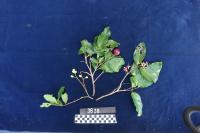
n. tree, 10-12 m tall (collection: Gregory M. Plunkett #3638)
Example: This tree is a good source of firewood, wood for house posts as well as sawn timber. The ripe fruit is edible but some of these are sour. Kids eat fruits – it is black. Pick only the most ripe fruits. This species grows commonly on river banks.
bookmarkintowosjei
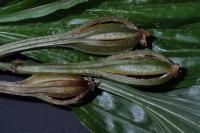
inwah iran
n. seed
bookmarkinwouse
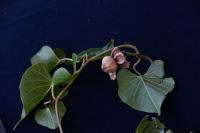
isji ariko
v. to gather beans
bookmarkkalmapig
n. kind of banana
bookmarknadiat
n. day
bookmarknahein
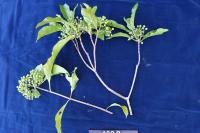
n. shrub to 1 m tall, frits green. Red clay soil (collection: Michael J. Balick #4880)
Example: Stems are used to produce cyclone houses--secure wild cane (Miscanthus) on the roof of the house. Fold cane in half over the stem of this plant and then lay it on the roof. Makes layers that resist the wind. The stem of this plant can be sharpened to make a fishing spear, or used as the shaft and a few wires are attached to the end.
bookmarknaheñ
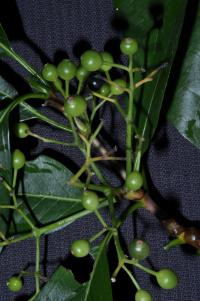
n. tree, 4 m tall (collection: Gregory M. Plunkett #4066)
Example: 1. Young saplings are used to prepare a fishing spear. First a straight sapling is chosen and sized. Then it is heated over a fire to render it pliable. After the length is straightened, it is decorticated. Once cooled, a portion of wire can be affixed to an end to aid in spearing fish.
bookmarknahoai
n. a plant from which twine is made
bookmarknahoij
n. kind of tree
bookmarkname cedo
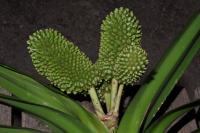
namesei
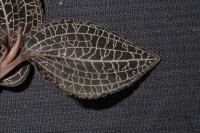
nanad itohou
![1. The leaves of this plant are used as a fertilizer when a person plants taro "to help to feed the ground for next year." 2. Sapwood of this tree, and one more [GMP 3591], in old days take from west side and cross mountain to the east, and on red clay mountain, burn it to make spirits to give more sun instead of rain so that gardens will grow well.](/media/aneityum/pix/GMP_3456_MJB_43-scaled.jpg)
n. shrub, 2 m tall (collection: Gregory M. Plunkett #3456)
Example: 1. The leaves of this plant are used as a fertilizer when a person plants taro "to help to feed the ground for next year." 2. Sapwood of this tree, and one more [GMP 3591], in old days take from west side and cross mountain to the east, and on red clay mountain, burn it to make spirits to give more sun instead of rain so that gardens will grow well.
bookmarknanad op̃a
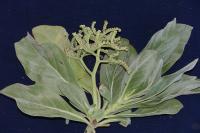
n. tree, 4-5 m tall (collection: Gregory M. Plunkett #3542)
Example: Some people use the dried leaves of this plant when there is no tobacco. Roll the leaves and smoke them. This is a good plant to lay under as a shade along the coast. Good firewood. The leaves are used with other leaves as part of a ceremony to calm the sea.* Burn leaves in a special place and toss ashes in the sea – sea will be calm.* When you are paddling to another island. Carry them with you and toss in sea as you go. Also goes with fasting and cleansing when traveling in this way.
bookmarknapat
n. a cloud, blackness, darkness
bookmarknapauwa
n. kind of taro
bookmarknapjis
n. a species of grass
bookmarknared
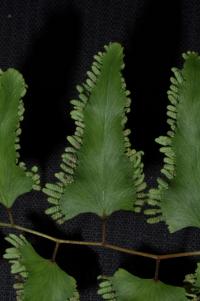
n. vine climbing on trees, growing in dense rainforest. (collection: Gregory M. Plunkett #4090)
Example: 1. The rachis of an old plant is braided as a rope to tie sugar cane, house posts, and fences. The rachis is used when green, and as it dries in form, it remains functional and lasts for a long time (10-12 years).
bookmarknasjiñaho
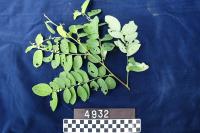
natau anyiyi
n. kind of banana
bookmarknattri
n. Canarium vulgare
Example: leaf--cold maceration in coconut milk and seawater, taken internally against diarrhea or ciguatera. Cold maceration of chewed leave, spat into a cup and mixed with coconut water: taken internally against ciguatera
bookmarknauyan
n. dawn of day
bookmarkneaig
n. the kernel of a coconut; the coconut tree
bookmarknecjop̃dak
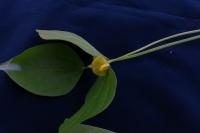
n. low-growing, creeping vine growing in grassy area just inland from coastal strand. Flowers yellow. (collection: Gregory M. Plunkett #3223)
Example: The leaves of this plant are used to treat stomach ache. Take a handful of leaves and mix with 1/2 liter of water, crush the leaves in the water and drink the entire amount when your stomach hurts. Alternatively, this can also be consumed 1x a week as a tonic drink for the stomach and system.
bookmarknecrakiti
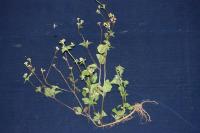
n. herb, growing at edge of garden area. (collection: Gregory M. Plunkett #3601)
Example: This is a "calendar plant". In winter months, if a person sees this plant in flower it is confirmation that the sea turtle has plenty of grease or fat and is good to eat. As a medicine for a cut, collect some leaves, mash them and squeeze the juice on a cut or sore on the body. Do this treatment 3x daily until the sore dries up or the cut heals.
bookmarknecñanjaa

n. shrub to 2 m, dbh 3 cm (collection: Michael J. Balick #4862)
Example: The common name of this plant refers to the footprint of a chicken. Mix the dried leaves of this plant with pieces of coconut and feed to chickens. They are said to really like it. Plant the shrub near the place that chickens are kept. This feed will make the chickens produce more eggs and also increase the number of healthy chickens.
bookmarknedelat
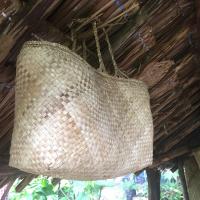
nefetgau
n. kind of sugarcane
bookmarknelmaha
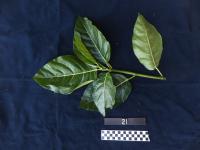
n. tree. Growing near village. (collection: Ashley A McGuigan #21)
Example: 1. To cure spirit sickness of the niteitau. Use plants that also end with "au" : niditau, intoutau, naoyerop. Go to the top of the plant to get the soft leaves of the plants niditau, intoutau, naoyerop, also take the bark. The person making the medicine should be holding the these leaves with a piece of nelmaha. Nelmaha means go away. The sick person chews the leaves and bark and swallows the juice spitting out the fiber into the nelmaha the medicine maker is holding. The medicine person then takes the spit out fiber in the nalmaha leaf and throws it into the sea in front of the village. 2. To cure headaches casued by bad spirit - Take one top from Nelmaha and one from inrowod (white stripe variety) Combine and chew these then spit them out and apply to the sick persons forehead. 3. To cure headaches - Someone other than the woman must prepare this. Break the top branch of netethae and remove leaves for use. Combine with the top leaves of the top branch of nelmaha. Chew the leaves and drink the juice. Do this when the sun is setting on the horizon. The woman gives the leftover fibers to the person who prepared the medicine and that person goes and throws the fibers in the direction of the setting sun. 4. To cure toothache when pregnant - Take the inner bark from Intejed and boil it in a pot of seawater (about 1 liter) along with 2 leaves from each of inpounatmas, narayag, nahayag, and nelmaha. Boil until juice is visibly leaving the plants. Put this water into your mouth and hold it there for 2-3 minutes. Do this this with one cup in the morning, 1 cup in the afternoon, and 1 cup in the evening. 5. Used to fight against black magic in an unspecified way. 6. Roll leaf and put in pocket for protection when walk in a new area. 7. Message plant if a land dispute – if a person puts this stem or leaf in another’s garden whom they are angry with it means go away!! 8. To treat sick people, especially who fall ill from black magic to save their life. Symptoms vary, for example a person with small boils over body,* a person chews the leaf and spits it on the sick person, 1x and then puts the branch with leaves near the sick person when they sleep – 3x (1x day) branch is ca. 25cm long. (*headache, severe)
bookmarkneri itai
n. leaves; grass
bookmarknida
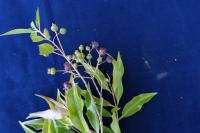
nigie

n. shrub, 1. 5 m tall (collection: Gregory M. Plunkett #3537)
Example: This plant is an aphrodisiac. Eat with coconut meat to make the body strong. Take 1/2 handful of leaves and mix with coconut leaves, use as needed. Mostly men eat this combination. It is best to eat with dry coconut that has no water in it. Eat it any time you wish.
bookmarknigirid
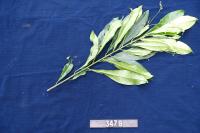
n. tree, 2 m tall (collection: Gregory M. Plunkett #3479)
Example: The leaves of this plant are used in cooking, particuarly with the earth oven. Use a fire to heat stones, then when the fire burns down and the stones are hot, pile these leaves on top of the hot stones and then place the food being cooked--taro, fish, pig, cassava, banana or other foods--on top of the leaves. Then pile more of these leaves on top of the food and then place additional hot stones on top of that pile of leaves. While the food is cooking--each type of food takes a different amount of time--the leaves give off a very nice smell and help flavor the food. The young stems of this plant are used in home construction but as they are small and thin, they are not used for posts.
bookmarknijcel

nilbuthou
nilpodou
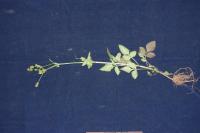
n. herb, growing at edge of garden area. Flowers yellow. (collection: Gregory M. Plunkett #3599)
Example: This is for a medicinal tea to give energy to a person who is not feeling well. Collect a handful of young stem apices and boil in 2-3 cups of water. Drink warm to help the body be strong and healthy. It is also good to treat diarrhea. When a person feels well again, stop this treatment but they can also drink this 1x daily, once before breakfast or before lunch, as a healthful tea.
bookmarknilpudou
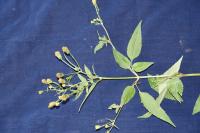
n. herb to 50 cm, flowers yellow. (collection: Michael J. Balick #4944)
Example: As a tonic medicine, collect a full handful of leaves, boil in one liter of water until fully cooked, then drink 1 cup 3x daily, warm, to treat a person who has worked too much, who is tired, to help their stomach and to help make them strong. For children and adults. Child’s dose is 1/2 cup, 3x daily until the child feels stronger.
bookmarknirid u numu

n. terrestrial fern on forest floor, growing in disturbed forest. (collection: Gregory M. Plunkett #3482)
Example: People who go fishing take this plant along with other unspecified leaves, crush them and rub them on the fishing line that the person is using. This is said to attract more fish to the bait. It is also a "message plant" to be put in a person’s hat when they come back from fishing and then people know that they caught fish. Local name means "fish gill." For performing a weather magic ritual to produce fog, this plant is fermented along with another plant (nap̃at) in a hole in a sacred stone (called "Naemoso") at a secret location on Aneityum.
bookmarknispahos
n. coconut leaves, plaited for covering ridge of roof
bookmarknohos esjig inwai
n. a banana
bookmarknohud ucnas
n. a bunch of taro; also "nuhud ucnas"
bookmarknomotmot
n. grass
bookmarknononhat
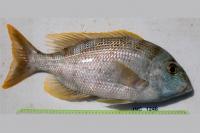
n. Blue-lined large-eye bream
Example: Photo by Jean-Lou Justine / Wikimedia Commons, License: CC BY-SA 3.0 via Fishes of Australia
bookmarknowat apen

n. Striated surgeonfish
Example: Photo by Mark Rosenstein / iNaturalist.org, License: CC BY-NC-SA 3.0 via Fishes of Australia
bookmarknoweitopgat
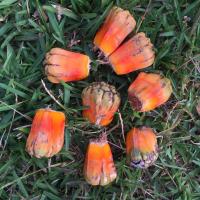
nuei
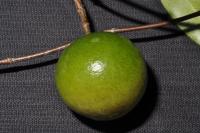
n. vine climbing up a dead tree, growing in dense rainforest. Fruits green. (collection: Gregory M. Plunkett #4056)
Example: 1. The stems are used as a traditional rope to fasten house posts. First a length of stem is coiled in a figure-eight pattern. It is then heated to render it pliable. Once heated, for several minutes, it is immediately used to fasten the posts. When cool, it is set and inflexible. Such a fastener can last 20 years.
bookmarknuhonwei
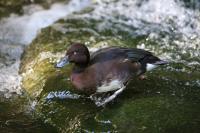
numuyehec
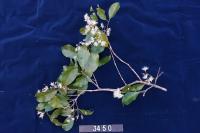
nupsin hudain
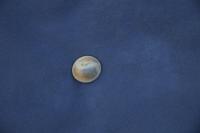
nupsinhodaeñ

